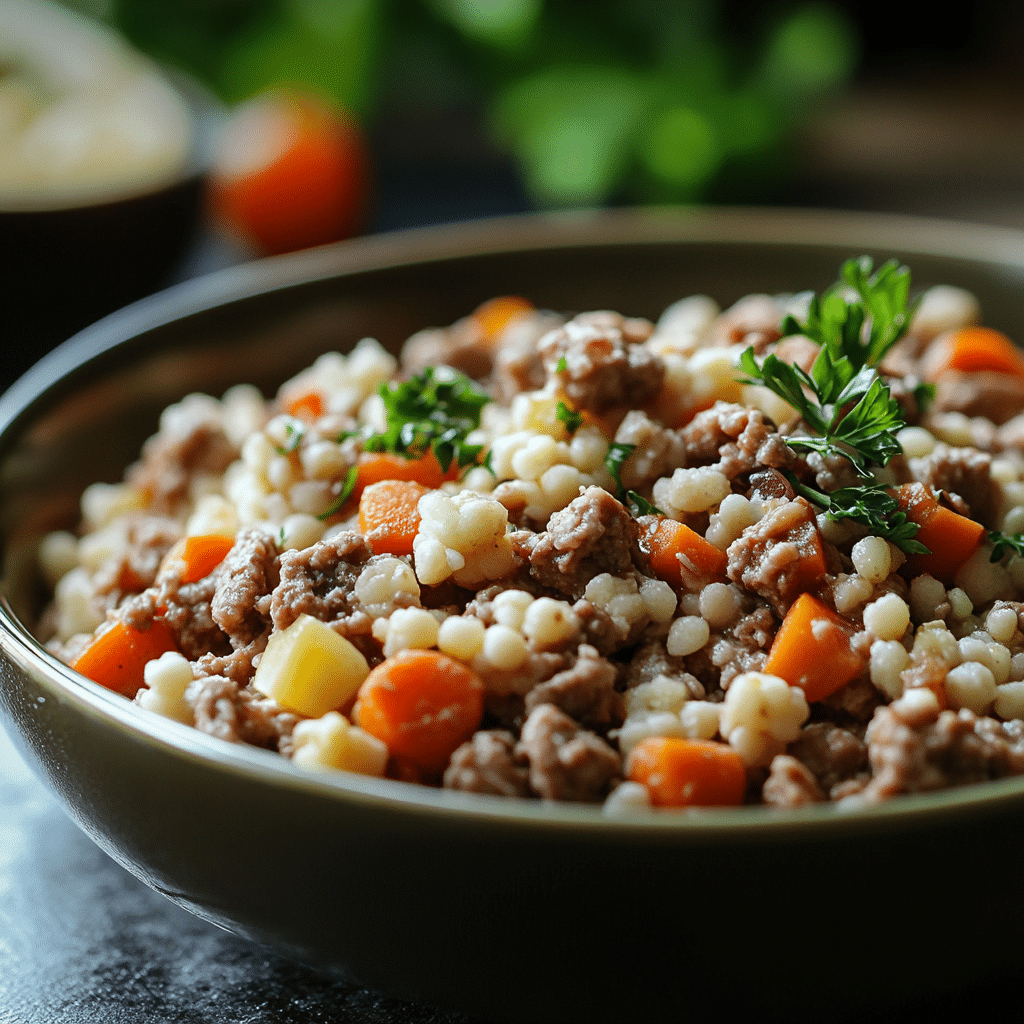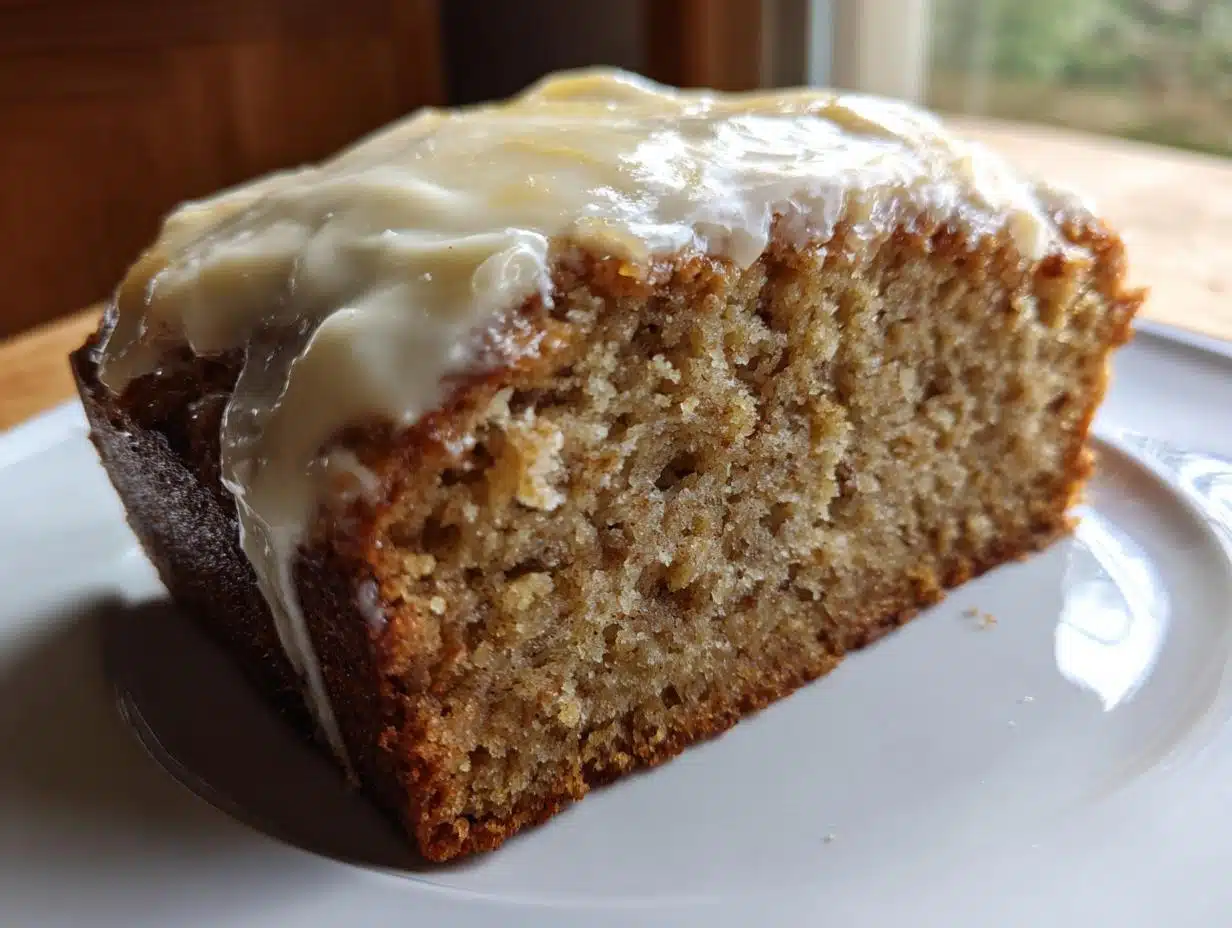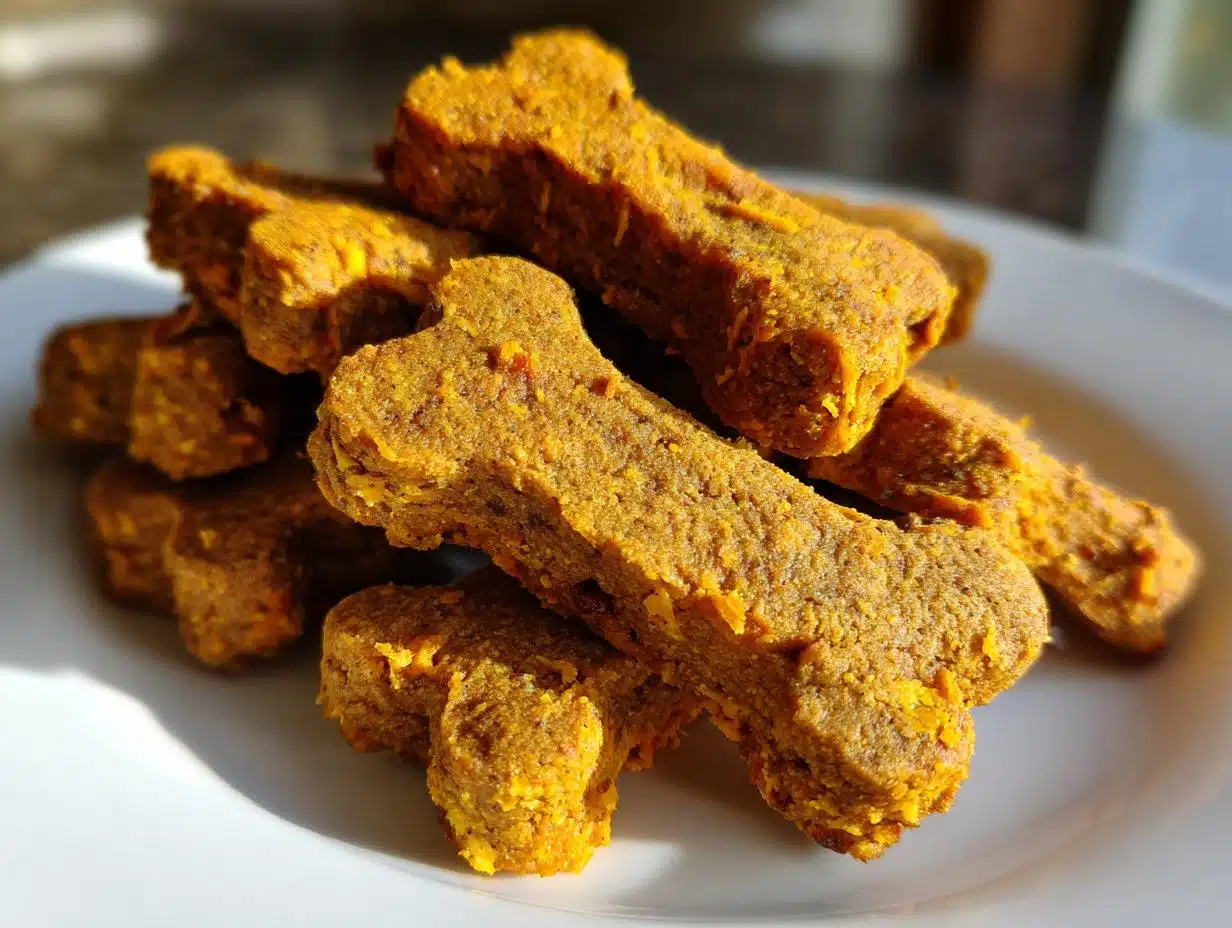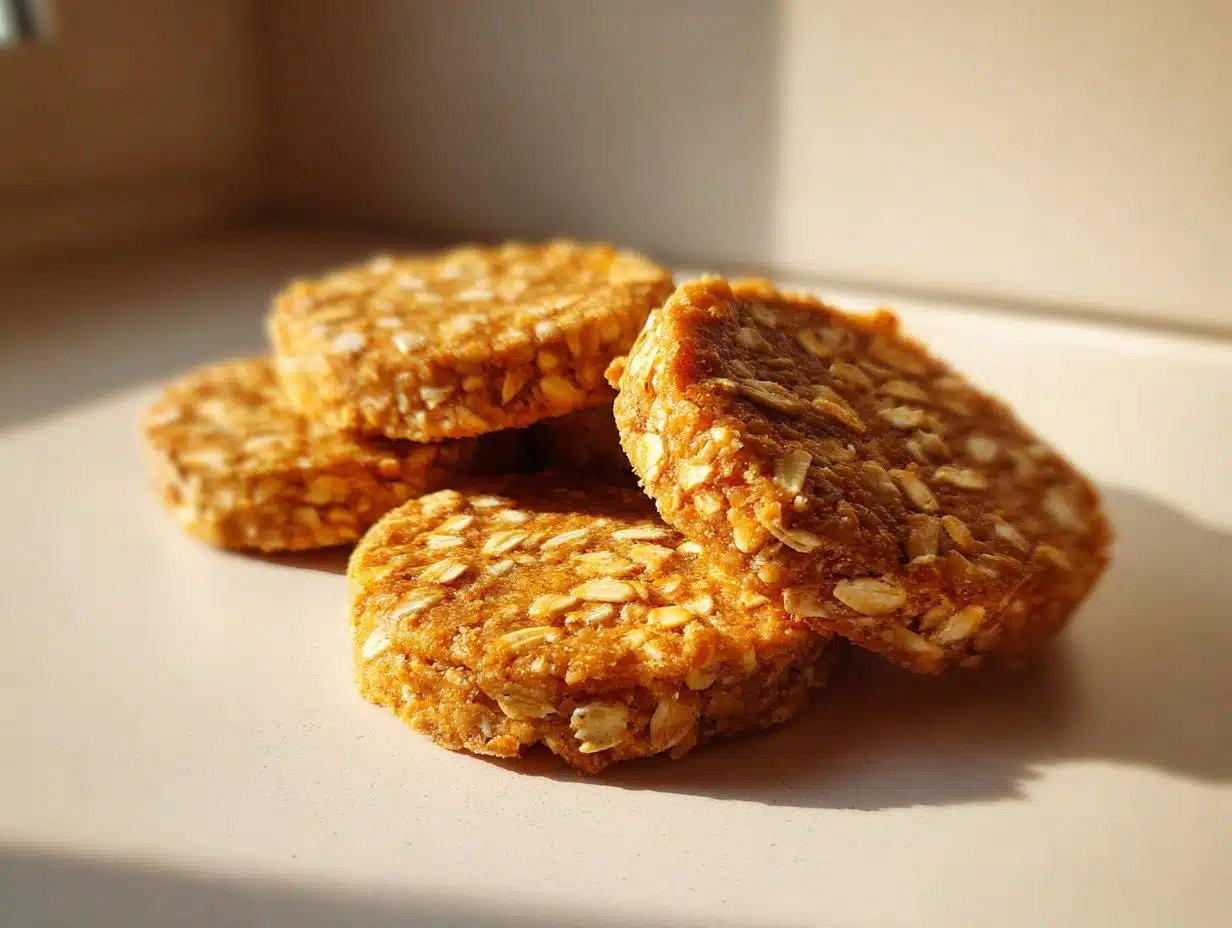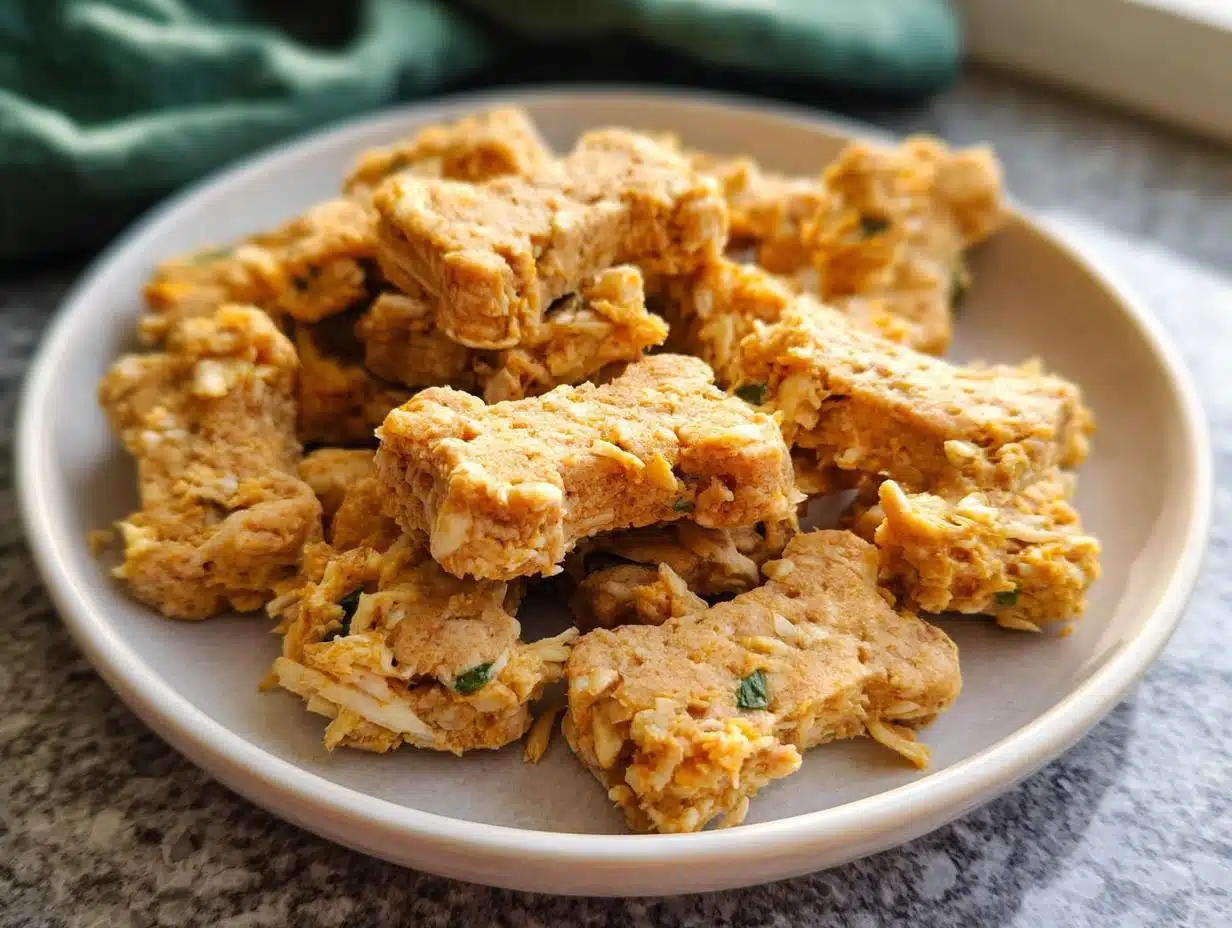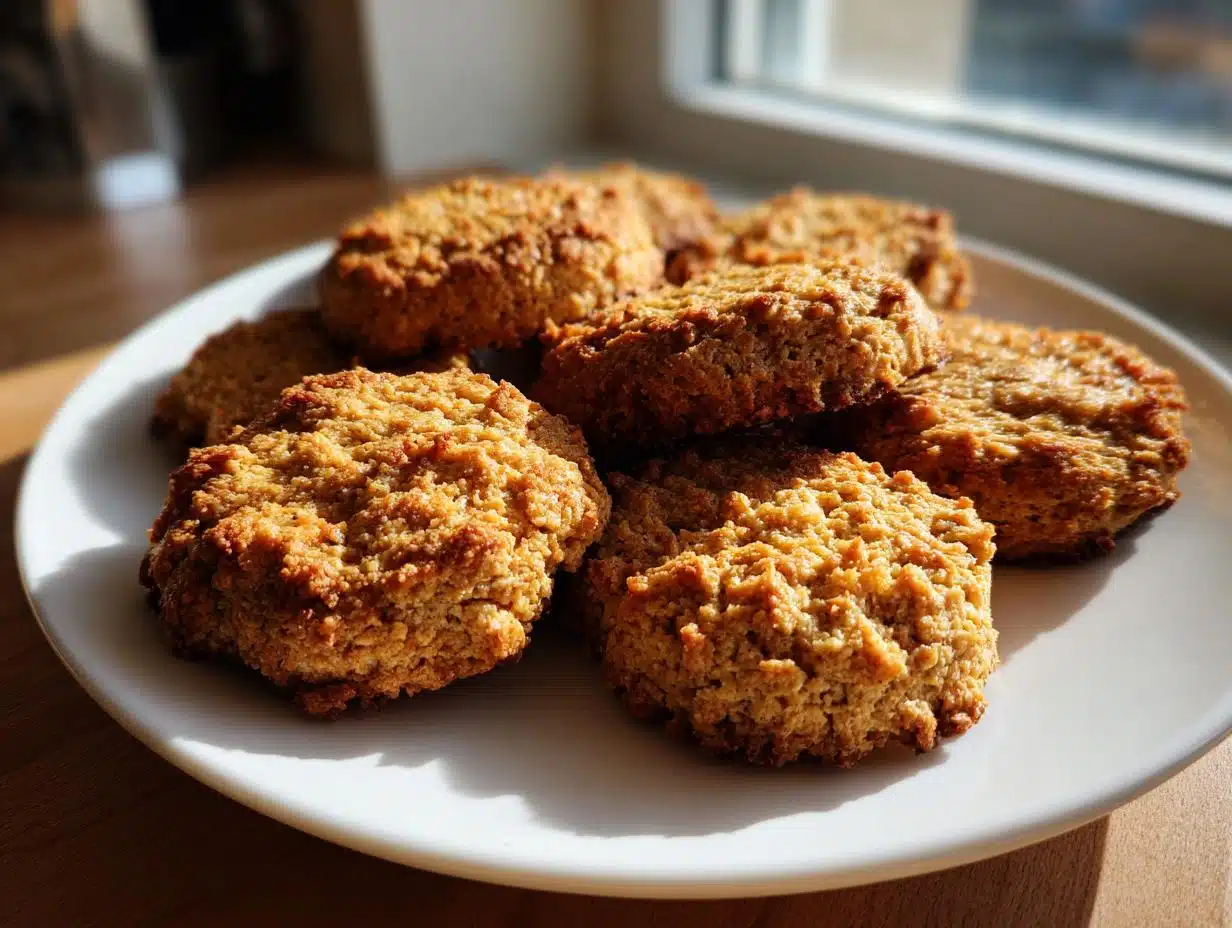Making your own homemade beef dog food recipes can be one of the most rewarding decisions for both you and your furry friend. If you’re tired of scanning ingredient labels or worrying about fillers in commercial kibble, this guide is your go-to resource. We’ll walk through the benefits of using beef, how to build nutritionally balanced meals, top mistakes to avoid, and easy recipes that even beginner dog parents can whip up at home.
Table of Contents
Table of Contents
1. Understanding Homemade Beef Dog Food Recipes
What is Homemade Beef Dog Food?
Homemade beef dog food is a customized meal prepared from scratch using fresh, whole ingredients—primarily beef, vegetables, and healthy grains. Unlike commercial dog food, which often contains preservatives, artificial additives, and meat by-products, homemade food lets you control exactly what your dog eats.
Making dog food at home doesn’t mean tossing scraps into a bowl. Instead, it’s about creating nutritionally complete recipes that match your pup’s dietary needs. Dogs thrive on protein-rich diets, and beef is one of the most digestible and accessible meats available.
Benefits of Making Beef Dog Food at Home
There are several compelling reasons why more dog owners are turning to homemade meals:
- Improved Nutrition: You can ensure high-quality protein, natural ingredients, and zero preservatives.
- Customizable Diets: Easily adjust portions and ingredients for allergies, sensitivities, or breed-specific needs.
- Better Digestion: Many dogs experience reduced gas, firmer stools, and fewer tummy troubles.
- Shinier Coat & Energy Boost: Dogs fed on fresh beef and whole foods often show visible improvements in coat health and vitality.
- Budget Control: Preparing food in bulk with affordable cuts of beef can reduce your monthly dog food bill.
When done right, homemade beef dog food can be just as nutritious—if not more—than high-end commercial brands.
2. Is Beef Good for Homemade Dog Food?
Nutritional Value of Beef for Dogs
Yes—beef is an excellent protein source for dogs. It’s loaded with essential nutrients that support overall health, including:
- High-Quality Protein: Aids in muscle maintenance and immune health.
- Iron: Supports red blood cell function.
- Zinc: Important for skin and immune system support.
- B Vitamins: Including B12 and niacin for energy production and nerve function.
- Selenium: A potent antioxidant that supports cell health.
However, not all beef is created equal. Stick to lean cuts, such as ground beef with 85-90% lean content or stew meat trimmed of fat. Excess fat can lead to obesity or pancreatitis over time.
Types of Beef Cuts to Use Safely in Recipes
Here are some safe and affordable beef cuts ideal for homemade dog food recipes:
| Beef Cut | Benefits | Notes |
|---|---|---|
| Ground Beef (85%+) | Easy to digest, versatile | Drain excess fat after cooking |
| Stew Meat | Rich in flavor, great for slow cooking | Trim visible fat |
| Chuck Roast | Affordable, tender when cooked well | Boil or slow cook for easy digestion |
| Beef Liver | High in vitamins A, B, and iron | Feed in small amounts weekly only |
| Top Sirloin | Leaner and rich in protein | Great for dogs with active lifestyles |
Avoid fatty cuts like ribeye or t-bone and never feed raw or undercooked beef unless supervised by a vet.
For ideas using cooked beef, don’t miss our Easy Carrot Apple Crunchies—perfect as a snack alongside a beef-based meal.
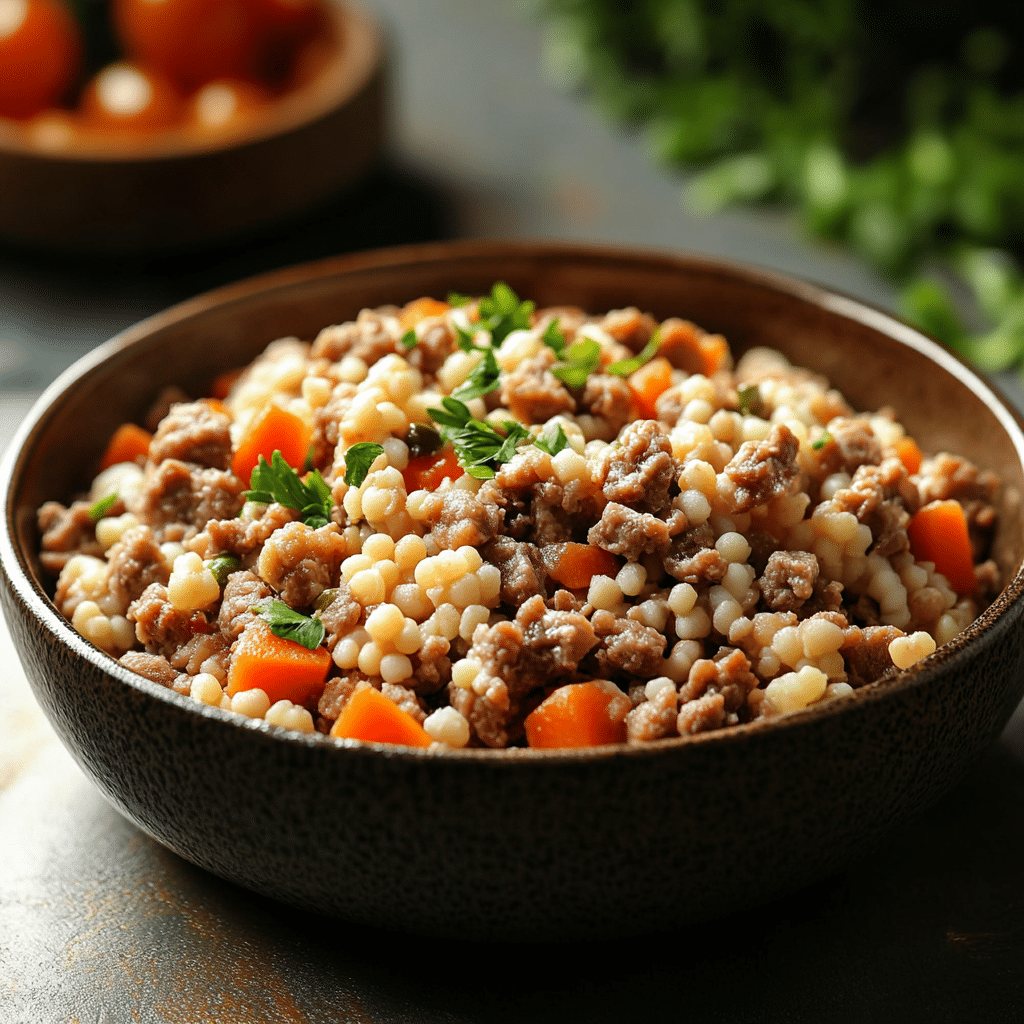
3. Essential Ingredients for Beef Dog Meals
Top 3 Ingredients Every Dog Food Needs
A balanced dog meal isn’t just about beef. While it’s a rich protein source, dogs need a variety of nutrients to thrive. The top three core components of any healthy homemade beef dog food recipe include:
- Lean Protein (Beef)
The base of your meal should be high-quality, lean beef. It helps maintain muscle mass, supports metabolism, and provides essential amino acids. - Complex Carbohydrates (Brown Rice, Oats, Sweet Potatoes)
These supply sustained energy, fiber, and key vitamins like B6. Choose easily digestible grains like:- Cooked brown rice
- Rolled oats
- Quinoa
- Mashed sweet potatoes
- Vegetables (Carrots, Green Beans, Peas)
Dogs benefit from the vitamins, minerals, and antioxidants in veggies. Make sure to cook and chop them finely for easy digestion. Try:- Carrots for beta-carotene and fiber
- Peas for protein and vitamin A
- Green beans, like the ones in our Green Bean Crunchies for Dogs, for low-cal crunch and minerals
Together, these ingredients provide a well-rounded meal that’s easy on the tummy and loaded with flavor.
Supplements and Additions to Boost Nutritional Value
Homemade meals can lack certain nutrients found in commercial dog food. To ensure a complete diet, consider these additions:
- Calcium: Add crushed eggshell powder or plain yogurt
- Fish Oil or Flaxseed Oil: Rich in Omega-3 for heart and skin health
- Multivitamins: Ask your vet about safe supplements like taurine and B-complex
- Pumpkin Puree: Great for digestion and bowel regularity
Want to add a healthy treat? Try our Pumpkin & Oat Cookies—they pair wonderfully with beef-based meals.
4.mEasy Homemade Beef Dog Food Recipes
Cooked Ground Beef with Rice & Veggies
One of the most popular and easiest homemade beef dog food recipes is the ground beef and rice combo. It’s quick to prepare, budget-friendly, and loved by even picky pups.
Ingredients:
- 1 lb lean ground beef (90% lean or better)
- 1 cup brown rice (cooked)
- ½ cup peas
- ½ cup shredded carrots
- 1 tsp olive oil (optional)
Instructions:
- Cook brown rice separately until tender.
- In a large skillet, brown the ground beef. Drain excess fat.
- Add chopped carrots and peas. Cook for 5–7 minutes.
- Combine with cooked rice and drizzle a little olive oil.
- Let cool before serving. Store leftovers in an airtight container for up to 3 days.
Perfect for everyday feeding in moderation—just don’t forget to consult your vet before switching entirely.
Beef Stew for Dogs: A Comforting Favorite
This hearty stew is ideal for dogs who need extra hydration or love warm, soft meals. It’s especially comforting during colder months.
Ingredients:
- 1 lb beef stew meat (cubed)
- 2 cups water or unsalted beef broth
- ½ cup chopped sweet potatoes
- ½ cup green beans
- ¼ cup carrots
Instructions:
- In a large pot, combine beef and broth. Bring to a boil, then reduce heat to simmer.
- Add vegetables and simmer for 30–40 minutes until meat is tender.
- Cool before serving and store extra stew in the fridge.
5. Cooking Methods for Beef Dog Food
Slow Cooking vs. Boiling vs. Baking
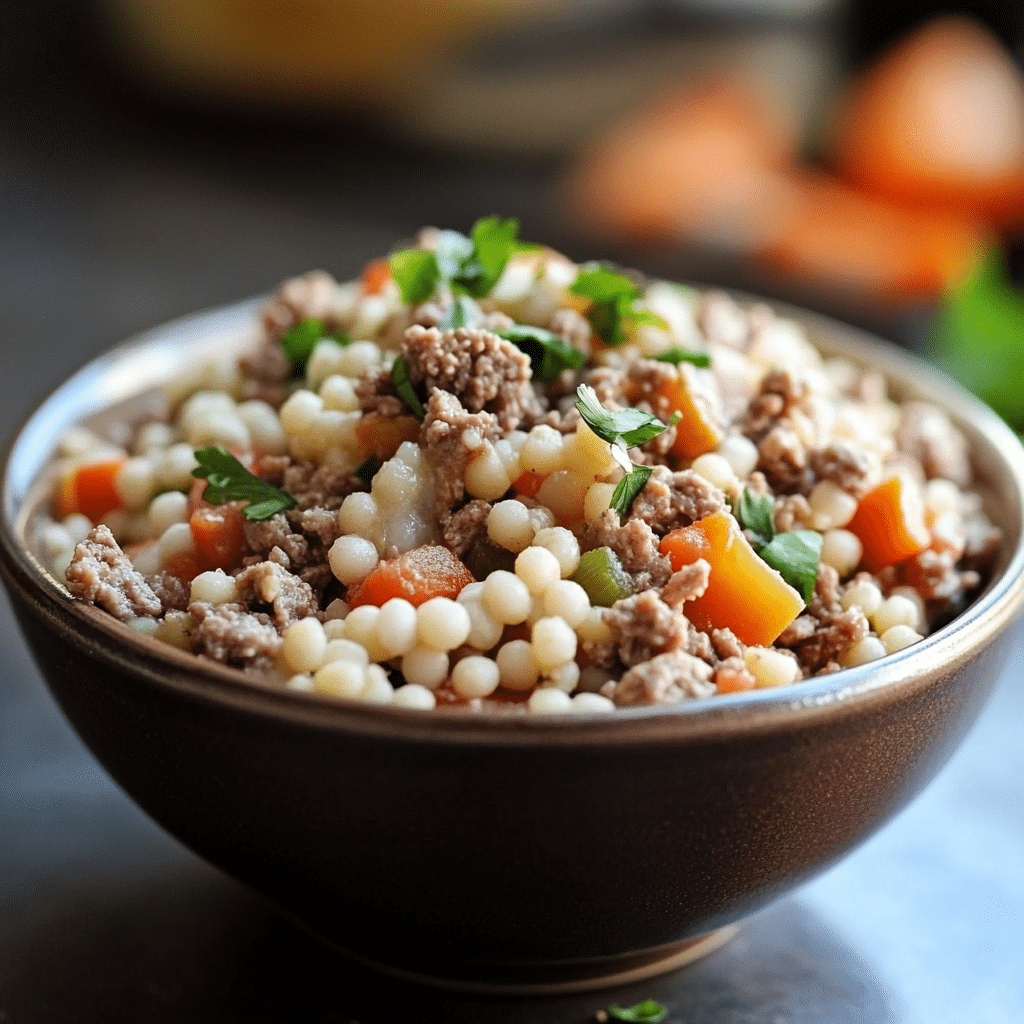
The way you prepare beef can affect not just taste, but also digestibility and nutritional value. Here’s how common cooking methods stack up:
Slow Cooking (Crockpot)
- Pros: Preserves nutrients, enhances flavor, tenderizes tough cuts.
- Best For: Stews, shredded beef meals.
- How-To: Toss in beef, veggies, and a splash of water or broth. Cook on low for 6–8 hours.
Boiling
- Pros: Quick, simple, and removes excess fat.
- Best For: Ground beef or stew meat.
- How-To: Boil beef until fully cooked, then combine with veggies or grains.
Baking
- Pros: Adds texture, great for dog meatloaf or beef patties.
- Best For: Portion-controlled meals.
- How-To: Bake lean beef and chopped veggies at 350°F for 30 minutes or until cooked through.
| Cooking Method | Time | Ideal Use | Retains Nutrients |
|---|---|---|---|
| Slow Cooking | 6–8 hours | Stews, soft food | High |
| Boiling | 10–20 mins | Ground beef mix | Medium |
| Baking | 30 mins | Meatloaf, patties | Medium |
To preserve nutrients, avoid frying beef and never cook with garlic, onions, or spices—these are toxic to dogs.
Dos and Don’ts When Cooking Beef for Dogs
✅ Do:
- Use lean cuts and drain off excess fat.
- Cook beef thoroughly to avoid bacteria.
- Pair with dog-safe veggies and grains.
- Cool meals before serving.
❌ Don’t:
- Use garlic, onion, or heavy seasoning.
- Rely on raw beef without veterinary guidance.
- Feed bones from cooked beef—they can splinter.
Pro Tip: For an easy, low-prep option, try combining boiled ground beef with rice and a few chopped green beans for a fast, balanced meal. Then add a no-bake treat to complete it.
6. Can I Feed My Dog Ground Beef and Rice Every Day?
Pros and Cons of a Ground Beef and Rice Diet
While ground beef and rice is a common homemade meal base, feeding it every day without variation can lead to nutritional gaps.
✅ Pros:
- Easily digestible for sensitive stomachs
- Provides protein and energy
- Affordable and easy to prepare
❌ Cons:
- Lacks essential vitamins and minerals if not supplemented
- Can cause imbalances in calcium/phosphorus
- Not ideal long-term without variety or vet supervision
If you’re going to feed it regularly, make sure to rotate in other foods like:
- Eggs or salmon for omega-3s
- Leafy greens for vitamins K and C
- Pumpkin for fiber (Check our Pumpkin & Oat Cookies)
How to Rotate Meals for Nutritional Balance
Rotating meals prevents boredom and ensures nutrient coverage. Here’s a sample weekly plan:
| Day | Protein Source | Add-Ins |
|---|---|---|
| Monday | Ground Beef | Rice + Carrots |
| Tuesday | Salmon | Quinoa + Spinach |
| Wednesday | Chicken | Sweet Potato + Peas |
| Thursday | Ground Beef | Brown Rice + Green Beans |
| Friday | Turkey | Oats + Pumpkin |
| Saturday | Canned Salmon | Carrots + Brown Rice |
| Sunday | Beef Stew Meat | Mixed Veggies + Quinoa |
This kind of rotation helps prevent nutrient deficiencies and gives your dog a more exciting menu.
7. Storing & Serving Homemade Dog Food
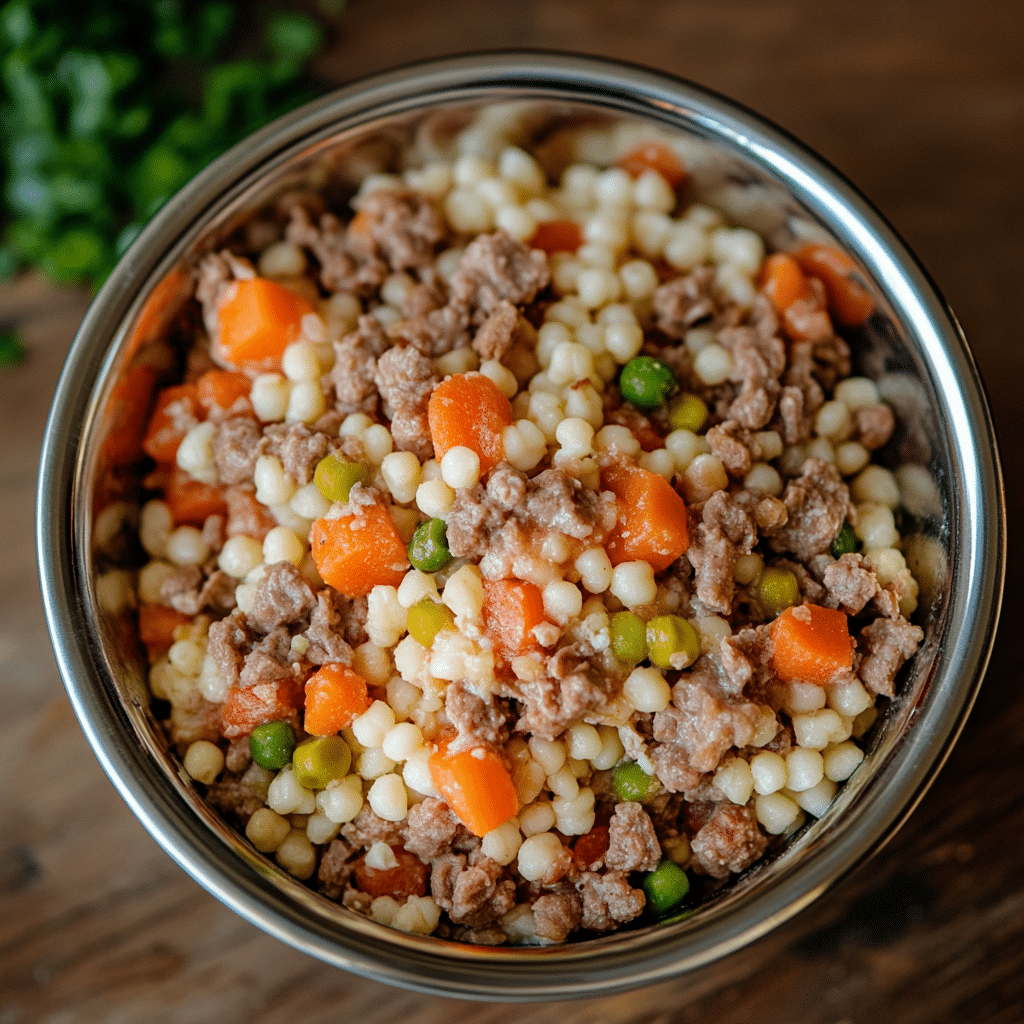
Best Practices for Storing Cooked Beef Dog Food
Once you’ve cooked up a batch of delicious homemade beef dog food, it’s important to store it properly to retain freshness and avoid spoilage.
Refrigeration:
- Store in airtight containers
- Keeps fresh for up to 3–5 days
- Divide into daily portions for easy scooping
Freezing:
- Ideal for batch cooking
- Use freezer-safe bags or silicone trays
- Keeps fresh for up to 3 months
- Label with date and ingredients
Pro Tip: Use ice cube trays for freezing small portions—perfect for small dogs or travel meals.
Portion Control and Serving Guidelines
Feeding the right amount is crucial. Overfeeding leads to weight gain, while underfeeding deprives your dog of key nutrients.
Here’s a general guideline based on weight and activity level:
| Dog Weight | Inactive Dogs | Active Dogs |
|---|---|---|
| 10 lbs | ¾ cup/day | 1 cup/day |
| 25 lbs | 1½ cups/day | 2 cups/day |
| 50 lbs | 2½ cups/day | 3 cups/day |
| 75+ lbs | 3½–4 cups/day | 4½+ cups/day |
Adjust portion size based on your dog’s age, metabolism, and exercise. Puppies and nursing dogs often need more.
8. Mistakes to Avoid with Homemade Dog Food
Common Nutritional Errors Dog Owners Make
Homemade food is amazing—but only when done right. Here are some common slip-ups to avoid:
- Not balancing nutrients: Too much protein, too little calcium or fiber.
- Overusing beef liver: While nutritious, excess vitamin A can cause toxicity.
- Neglecting essential fats: Dogs need good fats for healthy skin and coat.
- No supplementation: Even the best homemade meals may need a vet-approved multivitamin.
Ingredients You Must Never Use in Dog Recipes
Some common kitchen ingredients are toxic to dogs and should be strictly avoided:
| Ingredient | Why It’s Dangerous |
|---|---|
| Garlic & Onions | Can cause red blood cell damage |
| Grapes & Raisins | Linked to kidney failure |
| Chocolate & Caffeine | Toxic to the nervous system |
| Cooked Bones | Can splinter and damage intestines |
| Salt & Seasonings | May lead to sodium ion poisoning |
For safe treats that avoid these pitfalls, check out our Carrot Apple Crunchies.
9. Vet-Approved Homemade Beef Dog Food Tips
How to Consult Your Vet for a Balanced Recipe
Before switching fully to homemade meals, schedule a consult with your vet or a veterinary nutritionist. They can help:
- Evaluate your dog’s unique needs
- Identify deficiencies in your current recipe
- Recommend supplements or custom formulations
Bring a sample of your recipe and a list of ingredients to your appointment.
When to Switch from Store-Bought to Homemade
Homemade beef dog food is ideal if your dog:
- Suffers from allergies or food sensitivities
- Has digestive issues with processed kibble
- Is a picky eater or needs a specific diet (e.g., low-fat, high-protein)
Transition slowly over 7–10 days to avoid digestive upset. Begin by mixing small portions of homemade food into their regular kibble and increase gradually.
FAQs
Is beef good for homemade dog food?
Yes, beef is an excellent source of high-quality protein, iron, zinc, and B vitamins. It supports your dog’s muscle growth, immune system, and energy levels when included as part of a balanced meal.
Is it okay to feed dogs cooked beef?
Absolutely. Cooked beef is safe for dogs as long as it’s unseasoned and fully cooked. Avoid fried or fatty cuts, and don’t use garlic, onions, or spices that can be toxic.
What should top 3 ingredients be in dog food?
Every balanced homemade dog food recipe should include:
- Lean protein (beef, chicken, or fish)
- Complex carbohydrates (rice, sweet potatoes, oats)
- Fiber-rich vegetables (peas, carrots, green beans)
Can I feed my dog ground beef and rice every day?
It’s okay short term, especially for upset stomachs, but not ideal as a full-time diet. Long-term use needs added nutrients and variety to stay balanced and healthy.
What are the best ingredients to put in homemade dog food?
Stick to:
- Lean meats (beef, turkey, salmon)
- Whole grains (brown rice, quinoa)
- Veggies (carrots, green beans, peas)
- Healthy fats (olive oil, flaxseed)
- Supplements (calcium, fish oil, multivitamins)
For more recipes follow me on PINTEREST

